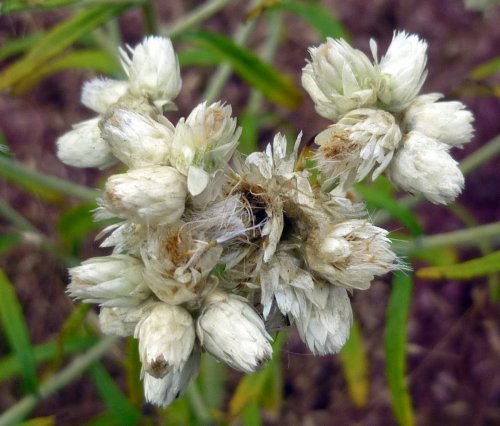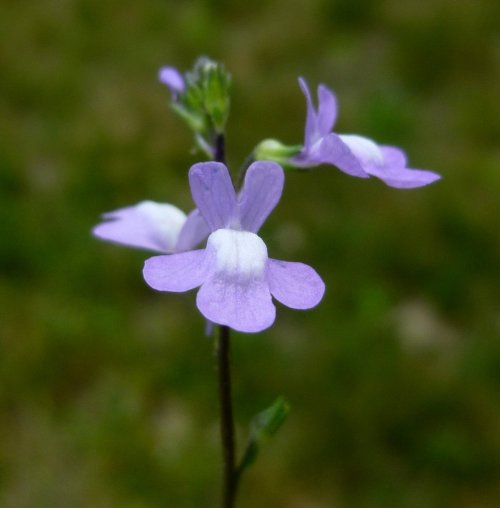We’ve had 2 or 3 hard frosts here so the meadows full of flowers that we enjoyed all summer long have now gone over to browns and grays, but throughout October, here and there and now and then, I’ve stumbled across a solitary blossom, still hanging on to what was.
This blue toadflax (Nuttallanthus Canadensis) grew on the river bank and had a single bloom at the top of an exhausted stalk. There was a nice rust brown stone beside it to use as a background too.
Evening primrose (Oenothera biennis) sneaks in a bloom now and then on a good sunny day but there are few bees left to enjoy them. Bumblebees are moving so slowly that their movements can barely be seen as they crawl rather than fly.
A small tuft of bluets (Houstonia caerulea) grew in a lawn that I walked by recently. There were 3 or 4 pale flowers on the plant, and as usual it seemed as if they were competing to see which could show the faintest blue tint on its petals. Deep down, these petals always seem to want to be white and looking for those that are the bluest is always a fun summer activity.
New England asters (Symphyotrichum novae-angliae) can take a lot of cold but even they have mostly closed up shop for the season. An occasional defiant burst of color can still be seen along the roadsides where there is shelter from the frost.
I can’t think of many plants more resistant to cold than a carrot and that is really all Queen Anne’s lace (Daucus carota) is, so seeing it blooming at this time of year doesn’t surprise me. The carrots that we eat come from this introduced wildflower, and any carrot is sweeter after a frost has nipped it. There are however some very similar plants that are among the most toxic known, so when I want sweet fall carrots I go to the farmer’s market.
One sulfur cinquefoil (Potentilla recta) plant in a field of thousands of different species had a single pale, buttery yellow blossom, but even though the blossom was pale it still shone like a miniature sun among the browns and grays of the meadow.
The phlox (Phlox paniculata) in my gardens have all given up the ghost but this hardy example I saw beside a road was protected by overhead trees and was still blooming as if it were September.
You never really know what you’re getting with sweet everlasting (Pseudognaphalium obtusifolium) because its flowers look closed even when they’re open. I just noticed this year how cold hardy they are-I’m seeing more of them than any other wildflower.
I was surprised to see this lobelia, called Indian tobacco (Lobelia inflata), blooming at the edge of my lawn this late in the season. Apparently it’s not as delicate as I thought. It isn’t under trees so it must have taken the full brunt of the frosty nights. This plant is called Indian tobacco because someone though its seed pods resembled the tobacco pouches carried by Native Americans.
Yarrow (Achillea millefolium) usually tries for a second bloom in the fall and this year it just made it before we had a heavy frost. Man has had a close relationship with yarrow that has lasted thousands of years. A sprig of it was found in a Neanderthal Stone Age burial site estimated to be 100,000 years old.
In the cold dark days of the winter, dream about the flowers to get warmed up! ~Mehmet Murat ildan
Thanks for stopping in.






















